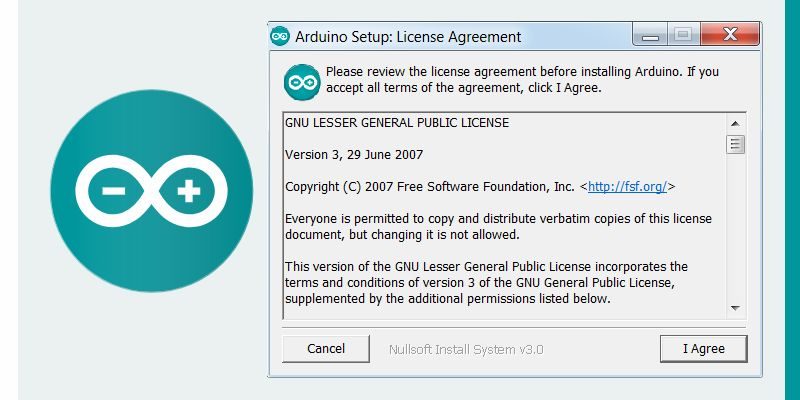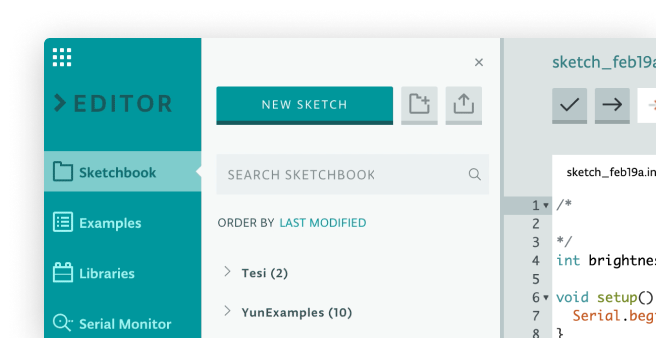
2.4 GHz Wi-Fi Development Boards. SDK: ESP-IDF source code and example applications. The same Arduino IDE can be used but with. The familiar Arduino IDE is also available. Last revision 9 by SM The text of the Arduino getting started guide is licensed under a Creative Commons Attribution-ShareAlike 3.0 License. When the Arduino Software (IDE) is properly installed you can go back to the Getting Started Home and choose your board from the list on the right of the page.
Arduino Ide Exe Windows 10 S But
IMPORTANT: This app performs with core functionality on Windows 10 S but some limited plugins do not work. It's intended for anyone making interactive projects. Arduino is an open-source electronics platform based on easy-to-use hardware and software. Signals and connections of the 0.96" I2C OLED display module.Arduino IDE.
Arduino, #nodemcu, #esp8266 УРОК №9 Подключение OLED дисплея 128х64 i2c к nodeMCU (ESP8266).The Arduino IDE software is free to download, and installing it is really easy. Arduino: 0.96 128x64 ' I2C OLED Display from banggood.com tutorial with review and drivers This is a little nice OLED display to. OLED Displays with Arduino - I2C & SPI OLEDs.
Posted by Electromania ApApLeave a comment on ESP8266 ESP-12E nodemcu 1.0 SPI with OLED Display 128×64 on using U8Glib library After several days of struggle…finally managed to get 4pin SPI OLED display running on ESP8266 ESP-12E nodemcu 1.0 dev. - Computes the average value of the last hour and the Leq value ( logarithmic average of exponentials). - Displays time, logged value as - digital value - bargraph - 18 minutes trend on the OLED display. - Logs every second in a one hour buffer. Exe file to your hard drive.
Arduino Ide Exe Serial For ESP8266
ESP Generate QRCode for GDEH0213B72 eink display, SSD1306, SH1106 oled displays 128*64 pixel and others based on Adafruit ST77XX EspSoftwareSerial Implementation of the Arduino software serial for ESP8266/ESP32. Automation & Linear Motion. 0.96" I2C / IIC Serial OLED Display Screen with BLUE text. Compatible with Arduino, ESP8266, ESP32, Raspberry Pi, etc.3.3V or 5V logic level, 3.3-6V input.
ESP32 I2C example using ESP32 as I2C master, and a I2C device with a registered interface (requires I2C restart to read register value) - i2c_restart_main.c It’s micro, but it still packs a punch – the OLED display is very readable due to the high contrast, and you can fit a deceivingly large amount of graphics on there. It’s 128 pixels wide and 64 pixels tall, measuring 0.96″ across. The OLED display module breaks out a small monochrome OLED display. It is having a resolution of 128×64. This is a 0.96 inch blue/white OLED display module can be interfaced with any microcontroller using SPI/IIC protocols.
The display module can be interfaced with any microcontroller using SPI/IIC protocols. This is a 0.96 inch blue OLED display module. Code: Select alloled = require("oled"). Example.lua (SDA and SCL setted to ESP-01 "0" and "2" GPIO's).
esp_err_t uart_driver_install (uart_port_t uart_num, int rx_buffer_size, int tx_buffer_size, int queue_size, QueueHandle_t *uart_queue, int intr_alloc_flags) ¶ Install UART driver. Comes with development resources and manual (examples for Raspberry Pi/Jetson Nano/Arduino/STM32). Supports SPI or I2C interface, configured via onboard resistor. 16 gray scale, better display effect. 128x128 high resolution. The package includes display board, display,4 pin male header pre-soldered to board.
The OLED library makes that really easy: you just have to change two lines of code. I have only added buttons for Reset and Flash, LED and another capacitor. The schematic for the ESP8266 is based on the one you can find here. The OLED display is not in the schematic, but it’s connected via I2C. The bottom part is the top layer with ESP8266 and LED.
The software support is lacking, but there is software around to use the ssd1306 i2c-based oled in esp-idf if you look around. (defined in components/audio_renderer.c) I2C OLED is connected, as ESP pin - I2C signal- GPIO14 - SCL GPIO13 - SDA Wiring is same as original, as ESP pin - I2S signal- GPIO25/DAC1 - LRCK GPIO26/DAC2 - BCLK GPIO22 - DATA and GPIO25/26 are fixed but GPIO22 can be re-arranged as you wish. #include The next step is to replace the instantiation of the driver: #include and replace it with.
The ESP8266 is about six years old now and the ESP32 is getting more mainstream every day. NHD-0420CW-AY3 from Newhaven Display International at Allied Electronics & Automation Applies to most of our items. 10% off 3, 15% off 5 items. Please consider taking advantage of our multi-item discount found at the top of the listing page it allows us to combine shipping and pass on the savings to you.
The problem is, now that I've got everything (apparently correctly) wired up, I have no idea what to do. I'm trying to get my ESP32 to output an 8-bit 16-kHz sound file that is stored in PROGMEM as uint8_t via I2S, through an Adafruit I2S mono amp. Now it is finally landing as "final silicon" samples in people's hands.
Development boards (often) convert to 2.54mm spacing and add additional functionality like power converter, buttons and LEDs. Examples: ESP-WROOM-32 ESP32 module, SX1276 and RFM95 LoRa modules. Once completed there is no need to repeat the process on the current board WiFiManager wifiManager // A new OOB ESP8266 will have no credentials, so will connect and not need this to be uncommented and compiled in, a used one will, try it to see how it works // Uncomment the next line for a new device or one that has not connected to your Wi.
In earlier tutorials, we discussed the interfacing of LCD and GLCD. Using in this case an IRC client android I connect to the same server and the same room with another nickname and module prints the characters received in the Oled Display. Examples: ESP32 Dev board, Lolin32 and NodeMCU-32S.
The module has only 4 pins, two of them are the supply pins, while the others are SCL and SDA, I2C protocol pins, which will be used to control the display. The OLED Driver IC is SSD1306, a single-chip CMOS OLED/PLED driver with controller for organic / polymer light emitting diode dot-matrix graphic display system. There are plenty of well written arduino oled libraries(AdaFruit SSD1306.
Seamuing I2C OLED Display Modul I2C SSD1306 Bildschirm Tiny Module 0,91 Zoll Blau 128X32 I2C OLED Treiber DC 3,3V bis 5V für Arduino (6 Stück) Kleines OLED-Display, keine Hintergrundbeleuchtung nötig, Selbstbeleuchtung, Display-Farbe: Weiß. - OLED Display demo - March, 2016 - | - Hardware: - ESP-12E Devkit - 4 pin I2C OLED 128x64 Display Module - Connections: - ESP - OLED - 3v3 - VCC. An exercise of connecting the ESP-12 DevKit board running nodemcu to a 4 pin I2C OLED Display.


This is the second version of our Grove - OLED Display 1,12'', it has 16 grayscale, 1.12'' screen size, and use I2C to communication, these features are the same as the first version. Start with resoldering the resistor from position R3 to R1 and then short the R8 resistor with some solder tin (or use a 0 Ohm resistor). -Configuration- For the I2C setup it demands a little bit of work on the module.


 0 kommentar(er)
0 kommentar(er)
